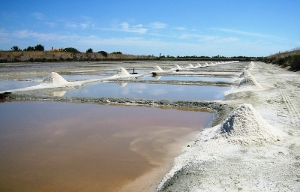 So you think we can grow our own energy? My first thought was “why not”, but the inner engineer said “do the math”. OK, inner engineers always win.
So you think we can grow our own energy? My first thought was “why not”, but the inner engineer said “do the math”. OK, inner engineers always win.
Now what facts and numbers are we interested in. I thought that it would be interesting to take the average American, put him and his average family on a piece of land. This piece of land would have to provide him with all the direct energy the family uses. I’ll define direct energy as the energy used for heating, cooling, electricity, and automobile transportation. For this scenario, we’ll assume that each factory, office, etc. has its own “energy farm”.
The best source for energy statistics is the US department of energy website (http://eia.doe.gov/).
I thought this was going to be hard. In fact the data is all right on this one table: http://www.eia.doe.gov/emeu/recs/recs2005/hc2005_tables/c&e/excel/tableus1part1.xls
It seems that the average US household consumes 95,000,000 BTU (equivalent) for electricity, natural gas, and heating oil.The average daily consumption of gasoline for the U.S. is about 9,000,000 barrels (42 gallons.) I’ll assume that half of that consumption is for individuals (tell me if I’m wrong). There are 127,000,000Â dwelling units.
The total energy growing requirements calculate out to about 157,000,000 BTU per year.
On the supply side…How much solar energy do plants absorb ? According to http://bioenergy.ornl.gov/main.aspx it’s possible to obtain 10 tons of dry plant material per acre per year. At an average of 19GigaJoules per ton, this would yield (assuming 50% conversion to useful energy) 45,000,000 BTU per acre. Doing the division 157,000,000/45,000,000 gives us 3.5 acres.
In reality, you’ll need much more area. Because you have to eat, the horses (or tractors) have to eat, you may have to irrigate your energy crops, and you need manufactured products.
Assuming very little “home grown energy”, we would need: 127,000,000 households x 3.5 acres = 445,000,000 acres of additional cultivation. The US has about 407,000,000 acres of arable land.
OOPS…
Well, maybe this efficiency thing isn’t such a bad idea after all..
Other sources:
- http://www.eia.doe.gov/kids/energyfacts/science/energy_calculator.html has conversions from different energy sources and units.
- http://www.eia.doe.gov/kids/energyfacts/science/energy_calculator.html
“I have been so happy as by accident to hit upon a method of restoring air which has been injured by the burning of candles and to have discovered at least one of the restoratives which Nature employs for this purpose. It is vegetation.”
Joseph Priestley 1771


 So you think we can grow our own energy? My first thought was “why not”, but the inner engineer said “do the math”. OK, inner engineers always win.
So you think we can grow our own energy? My first thought was “why not”, but the inner engineer said “do the math”. OK, inner engineers always win.